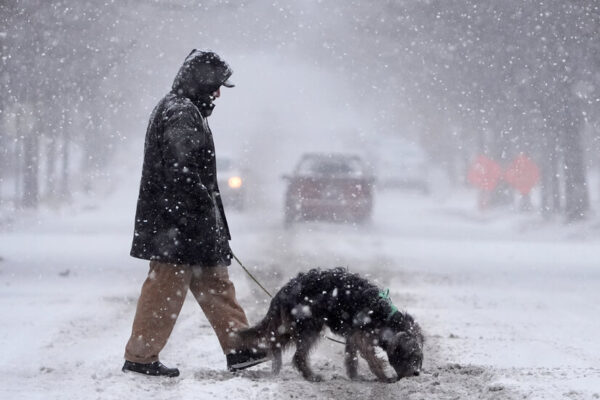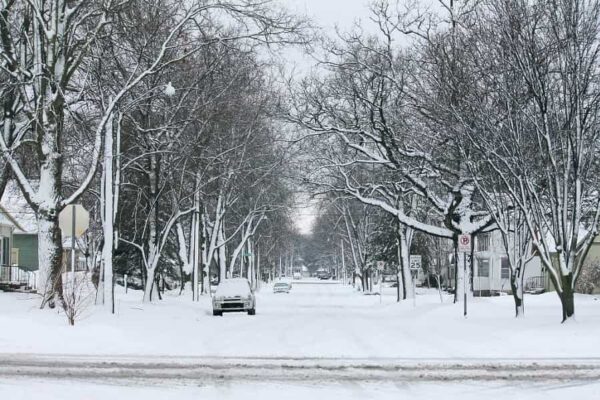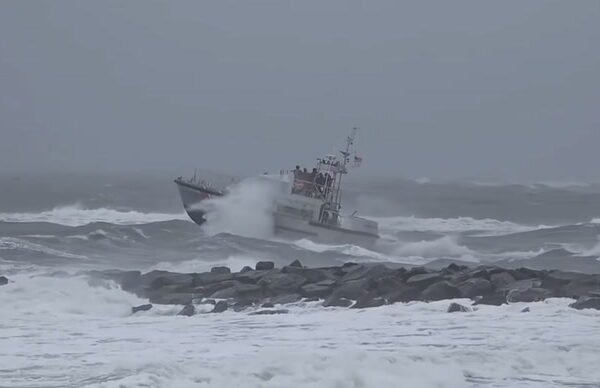Summer 2025 is shaping up to be a scorcher across much of the United States, with forecasts predicting hotter-than-average temperatures, varying precipitation patterns, and an active hurricane season. Whether you’re planning a beach vacation, a hiking adventure, or just trying to keep your garden alive, understanding the weather outlook is key to making the most of the season. Drawing from trusted sources like NOAA’s Climate Prediction Center, AccuWeather, and The Old Farmer’s Almanac, this article dives into what you can expect from June through August 2025, region by region, with practical tips to prepare. As someone who’s weathered many a sweltering summer, I’ll share insights and stories to help you navigate the heat and humidity with a smile.
Why Summer 2025 Weather Matters
Summer weather impacts everything from energy bills to outdoor plans. A hotter-than-normal season could mean higher cooling costs and increased wildfire risks, while wetter areas might face flooding or storm disruptions. Knowing the forecast helps you plan smarter, whether it’s choosing the right vacation spot or stocking up on sunscreen.
My Summer Weather Story
Last summer, I planned a camping trip in the Pacific Northwest, expecting mild weather. Instead, a surprise heatwave turned my tent into a sauna! This taught me the value of checking long-range forecasts. For 2025, let’s avoid those sweaty surprises with a detailed look at what’s coming.
National Overview: A Hot and Dynamic Summer
The consensus from meteorologists is clear: Summer 2025 will be warmer than average across most of the U.S., with no region expected to see cooler-than-normal conditions. The Climate Prediction Center (CPC) predicts above-normal temperatures nationwide, with the highest probabilities (70–80%) in the interior West and southwestern Texas. Precipitation will vary, with wetter conditions in the East and drier trends in the Northwest and Plains, potentially worsening drought in some areas.
Key Trends to Watch
- Temperature: Expect “overwhelmingly above normal” heat, especially in July and August, with cities like Denver and Los Angeles seeing more 90-degree days than last year.
- Precipitation: The East and Southeast will likely see above-average rainfall, while the Northwest, Northern Plains, and parts of the Southwest face drier conditions.
- Hurricanes: An active Atlantic hurricane season is forecast, with 13–19 named storms and 3–5 major hurricanes, peaking from August to October.
Regional Breakdown: What’s the Weather Like Near You?
Each U.S. region will experience summer 2025 differently. Here’s a detailed look at what to expect, with practical tips for preparation.
Northeast: Hot with Scattered Storms
The Northeast, including New York, Pennsylvania, and New England, will face above-average temperatures and normal to slightly above-normal rainfall. Expect 12–16 days above 90°F in New York City and 25–30 in Philadelphia. Thunderstorms may disrupt Fourth of July plans.
Tip: Keep an umbrella handy for outdoor events. For relief, visit coastal areas like Cape Cod, where ocean breezes temper the heat.
Southeast and Gulf Coast: Humid and Stormy
The Southeast, including Florida, Georgia, and the Carolinas, will see near-average temperatures but high humidity, making it feel hotter. Above-normal rainfall is expected, with a risk of tropical storms and hurricanes, especially in August and September.
Preparation: Invest in a quality dehumidifier for indoor comfort. Check hurricane preparedness guides at NOAA’s Hurricane Center for evacuation plans.
Midwest: Sweltering with Derechos
The Midwest, from Ohio to Minnesota, is in for a hot summer with persistent above-average temperatures. Minneapolis could see 16–22 days above 90°F. The northern Plains face below-normal precipitation, increasing drought risks, while the Ohio and Tennessee Valleys may experience intense thunderstorms, including derechos.
Stay Safe: Derechos can bring damaging winds. Secure outdoor furniture and have a storm-ready kit with flashlights and batteries.
Southwest: Monsoon Relief Amid Heat
The Southwest, including Arizona and New Mexico, will be hotter than average but may see above-normal monsoon rainfall starting in late June. This could ease drought but increase flash flood risks in desert areas.
Pro Tip: Plan outdoor activities early in the day to avoid peak heat. Visit Weather.gov for local flood warnings.
West and Northwest: Scorching and Dry
The West, particularly the Great Basin and Central Rockies, will face the highest odds of extreme heat, with Denver expecting 60–66 days above 90°F. The Pacific Northwest and Northern Rockies are forecast to be drier than average, raising wildfire concerns.
Fire Safety: Check fire restrictions before camping. Use apps like AirNow to monitor air quality if smoke from wildfires spreads.
Table: Summer 2025 Temperature and Precipitation by Region
| Region | Temperature Outlook | Precipitation Outlook | Key Concerns |
|---|---|---|---|
| Northeast | Above average | Normal to above | Thunderstorms, heat stress |
| Southeast | Near average | Above average | Hurricanes, humidity |
| Midwest | Above average | Below average (North), Above (South) | Derechos, drought |
| Southwest | Above average | Above average (monsoon) | Flash floods, heat |
| West/Northwest | Well above average | Below average | Wildfires, extreme heat |
Hurricane Season: A Looming Threat
The Atlantic hurricane season, running from June 1 to November 30, is expected to be active, with AccuWeather forecasting 13–18 named storms, 7–10 hurricanes, and 3–6 direct U.S. impacts. The Gulf Coast and Carolinas face higher-than-average risks. The Farmers’ Almanac warns of possible hurricane threats in the Florida Gulf Coast in mid-August and the Atlantic Seaboard in early September.
How to Prepare
- Stock Up: Create an emergency kit with water, non-perishable food, and first-aid supplies.
- Stay Informed: Use apps like FEMA for real-time alerts.
- Evacuation Plan: Know your local evacuation routes, especially if you live in coastal areas.
Wildfire Risks: A Growing Concern
Drier conditions in the Northwest, Northern Plains, and parts of California increase wildfire risks. The National Interagency Coordination Center highlights elevated fire potential in June for the coastal Southeast and Four Corners, shifting to the Southern Plains and Northwest by August. Smoke from Canadian wildfires could also affect air quality in the northern U.S.
Protecting Yourself
- Monitor Air Quality: Use AirNow to check for smoke-related health risks.
- Fire-Proof Your Home: Clear dry vegetation around your property and follow local fire bans.
Health and Safety: Coping with Heat
With more 90-degree days and warmer nights, heat stress is a serious concern. AccuWeather notes that extreme heat causes more deaths than hurricanes, tornadoes, and floods combined.
Tips to Stay Cool
- Hydrate: Drink water regularly, even if you’re not thirsty.
- Dress Smart: Wear light-colored, loose-fitting clothing and a wide-brimmed hat.
- Cooling Centers: Find local cooling centers via Ready.gov.
Pros and Cons of Summer 2025 Weather
Pros:
- Warmer temperatures are ideal for beach trips and outdoor activities in cooler regions like the Northeast.
- Above-average rainfall in the East could alleviate drought conditions.
- Active monsoons in the Southwest may boost water supplies.
Cons:
- Extreme heat increases energy costs and health risks.
- Drier conditions in the Northwest heighten wildfire risks.
- Active hurricane season threatens coastal areas with potential disruptions.
Comparison: Summer 2025 vs. 2024
Compared to 2024, which was the fourth-warmest summer on record, 2025 is expected to be hotter in the Northwest and north-central states but slightly less intense in the Southwest and East. Precipitation patterns shift, with the East seeing more rain than last year, potentially easing drought, while the Northwest faces drier conditions, unlike 2024’s more balanced rainfall.
Planning Your Summer: Best Tools and Resources
To make the most of summer 2025, use these tools for planning and staying safe:
- AccuWeather App: Offers detailed forecasts and severe weather alerts.
- NOAA’s Climate Prediction Center: Provides seasonal outlooks at cpc.ncep.noaa.gov.
- Weather Underground: Great for hyper-local forecasts and radar maps.
People Also Ask (PAA)
Will Summer 2025 Be Hotter Than 2024?
Most forecasts indicate Summer 2025 will be hotter than average across the U.S., particularly in the West and Northwest, compared to 2024’s already warm conditions. The Southeast may see slightly cooler temperatures due to increased cloud cover from storms.
Where Will It Be Wettest in Summer 2025?
The Eastern U.S., especially the Southeast and Carolinas, is expected to see above-normal rainfall, driven by tropical moisture and warm sea surface temperatures. The Southwest may also see wetter conditions due to an active monsoon season.
How Can I Prepare for Hurricanes in 2025?
Stock an emergency kit, know your evacuation routes, and monitor updates from the National Hurricane Center. Coastal residents should reinforce windows and secure outdoor items to mitigate storm damage.
What Are the Best Places to Visit in Summer 2025?
For milder weather, consider the Pacific Northwest (despite the heat) or coastal Northeast. For water activities, the Southeast’s beaches are ideal, though stay alert for storms. Check TourRadar for weather-based travel ideas.
FAQ
Q: How accurate are long-range summer forecasts?
A: Long-range forecasts, like those from NOAA or The Old Farmer’s Almanac, are about 50–80% accurate, as they rely on historical patterns and climate models. They’re best for general planning, not day-specific predictions.
Q: Will El Niño or La Niña affect Summer 2025?
A: The ENSO is expected to remain neutral through summer, with a slight chance of La Niña developing later. This means other factors, like sea surface temperatures, will drive weather patterns.
Q: How can I save on cooling costs this summer?
A: Use a programmable thermostat, seal windows and doors, and run fans to circulate air. Consider visiting cooling centers during extreme heatwaves to reduce energy use.
Q: Where can I find real-time weather updates?
A: Apps like AccuWeather, Weather Underground, or the National Weather Service’s Weather.gov provide up-to-date forecasts and alerts.
Q: What should I pack for a summer trip in 2025?
A: Pack lightweight clothing, sunscreen, a reusable water bottle, and a hat. In storm-prone areas, include a waterproof jacket and portable charger for emergencies.
Wrapping Up: Stay Cool and Prepared
Summer 2025 promises to be a hot, dynamic season with regional variations that demand preparation. From the Northeast’s steamy thunderstorms to the West’s blistering heat and the Southeast’s hurricane risks, understanding your local forecast is crucial. My own misadventure last summer taught me to respect Mother Nature’s unpredictability—don’t let a heatwave or sudden storm catch you off guard. Use trusted resources like NOAA and AccuWeather, plan your activities wisely, and keep safety first. Here’s to a summer filled with sunny days, refreshing dips, and maybe a few extra scoops of ice cream to beat the heat!





